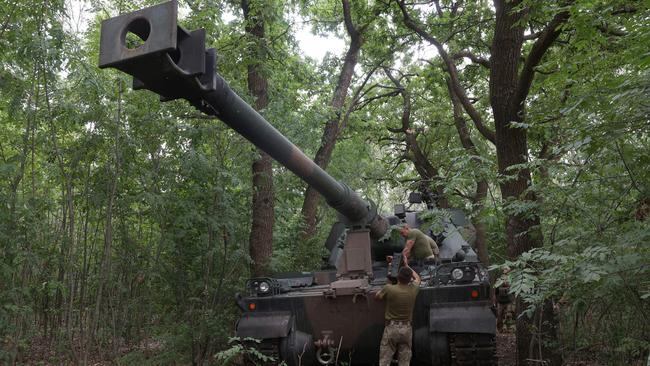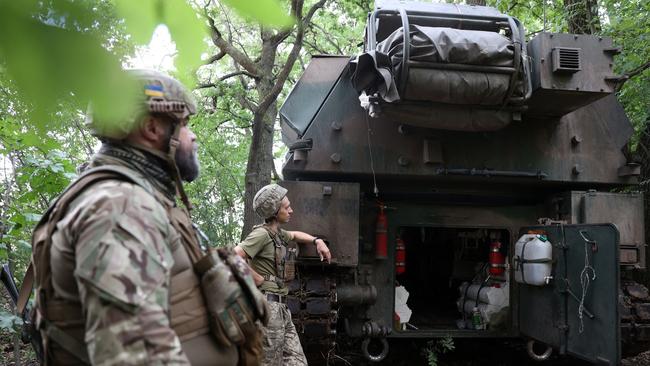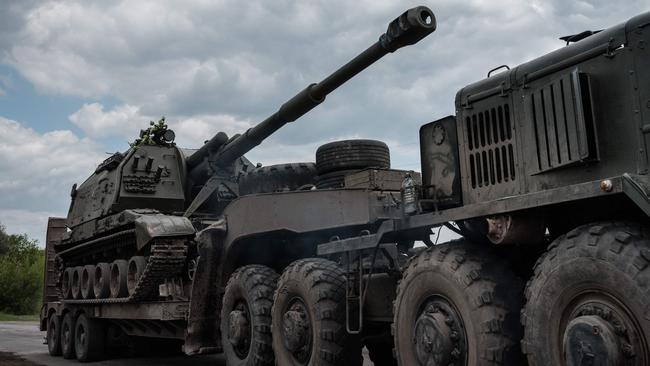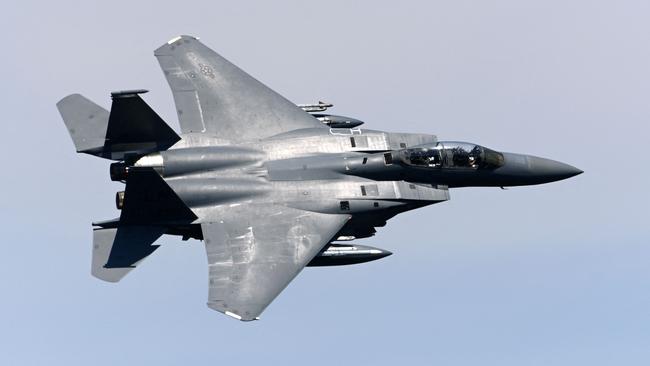Ukraine’s allies seek to bolster its air defenses with jet fighters and training
Long-term plan by Biden administration and Europeans could help Kyiv better shoot down missiles, defend infrastructure, troops.

The Biden administration, prompted by Kyiv’s recent successes in blunting Russia’s offensive in Ukraine, has begun reversing course on potentially providing advanced weapons like fighter aircraft that it earlier said could escalate the conflict with Moscow.
On Friday, the White House announced that the Pentagon was exploring ways to provide Ukraine with jet fighters, following a U.S. Air Force statement that it is looking at training Ukrainian pilots to defend their airspace with NATO-compatible aircraft. North Atlantic Treaty Organization allies in Central Europe are already moving toward providing Soviet-era jet fighters to Ukraine.
The transfer of Western jets could be months away, U.S. officials said. But senior U.S. and European officials have already signaled that NATO member nations are willing to deploy their air forces to monitor the airspace of allies that give aircraft to Ukraine. And U.S. officials publicly acknowledged this month they are looking at the monthslong process of training Ukraine’s air force to bring it up to NATO standards.
“You know, in the very beginning, Ukraine was provided with hand-held rockets. It was considered to be the safe option of what to provide Ukraine with,” said Czech Foreign Minister Jan Lipavský. “Now we are talking about tanks, [armored personnel carriers], jet fighters. The Czech Republic has provided helicopters. Almost all limits have been breached.” The changed posture, Western officials and analysts said, stems in part from Ukraine’s tenacious battlefield performance and a tacit understanding that Kyiv is likely to lean closer to the NATO alliance in the future.

Before Russia’s Feb. 24 invasion, Ukraine’s military was composed largely of Russian weapons and equipment. Since then, the U.S. and its allies have provided a stream of NATO weapons. They have steadily raised the bar for the sophistication and lethality of the military equipment to meet Ukrainian forces’ needs on the battlefield.
Slovakia, a NATO member, said this month it is considering giving Ukraine its 11 Soviet-made MiG-29 aircraft, while the Czech Republic and Poland have agreed to monitor Slovakia’s airspace starting in September, and to use their military aircraft to respond to any incidents, officials from the three countries said.
Having Ukrainian pilots operating U.S. aircraft like an F-15 or F-16, which the U.S. is considering providing, would mark a major move by Ukraine away from Russian-made systems.
In the U.S., calls have grown on Capitol Hill to bolster U.S. support of Ukraine’s air defense. In the House version of the defense authorization bill, Rep. Adam Kinzinger (R., Ill.) added an amendment that allotted $100 million to train Ukrainian pilots on American planes, in part to establish “a rapport between the Armed Forces of the United States and the armed forces of Ukraine to build partnerships for the future.”
In the Senate, legislators from both parties this month urged Defense Secretary Lloyd Austin and Army Gen. Mark Milley, the chairman of the Joint Chiefs of Staff, to consider providing Ukraine with advanced fighter aircraft and flight training.

“If we don’t start now, the most capable pilots will likely be killed,” Sen. Dan Sullivan (R., Alaska), who was the leading signatory of the letter, told The Wall Street Journal.
Congressional officials said that training even experienced Ukrainian pilots and crews on U.S.-made systems would take months, particularly during wartime, and supplying enough spare parts to keep the aircraft flying would be difficult.
The intermediate step, defense and congressional officials said, could be getting Ukrainian pilots more Soviet-style aircraft, which they already know how to fly.
“Now it’s about calibrating with the Ukrainians, with our NATO allies and with the facts on the ground to see: What is feasible? What is sustainable?” Mr. Sullivan said.
The U.S.-made F-15 and F-16, which are used by numerous NATO countries, may be the best option for the Ukrainian air force, the congressional officials said.
More modern jet fighters would enable Ukraine to strike behind Russian lines and to provide air cover to its troops, particularly in the open plains of the southern Kherson and Zaporizhzhia regions that Kyiv seeks to reclaim. They also could use aircraft to defend infrastructure, provide air cover to ground troops and potentially strike missiles launched from Russia, U.S. officials said.

Rep. Mike Quigley, (D., Ill.), who met with Ukrainian President Volodymyr Zelensky in Kyiv over the weekend, said Ukraine’s weapons priority for now is more long-range missile systems, as it prepares a counteroffensive to try to retake areas in the south seized by Russia.
Still, the prospect of jet fighters for Ukraine “is coming up again,” said Mr. Quigley, a member of the House Intelligence Committee.
In March, after Poland proposed transferring its MiG-29 aircraft to Ukraine via a U.S. air base in Germany, the Pentagon rejected the offer, calling it “high risk.”
The U.S. intelligence community assessed that transferring the Russian-made aircraft would risk a response from Moscow that could result in a direct military conflict with NATO.
The intelligence judgment applied only to the Polish MiG-29s. U.S. spy agencies declined to say whether they have updated their assessment.
Cedric Leighton, a retired Air Force colonel, and the chairman of Cedric Leighton Associates, a strategic risk consultancy, said that the concern in the early days after the invasion was that Russia would win quickly and so “why throw good airplanes after destroyed airplanes and then risk them getting destroyed as well?”
That scenario now seems less likely, he said.
“Everybody thought that it would be a disaster,” he said, “but they’re kicking ass and taking names. It’s pretty impressive.”

The Wall Street Journal







To join the conversation, please log in. Don't have an account? Register
Join the conversation, you are commenting as Logout